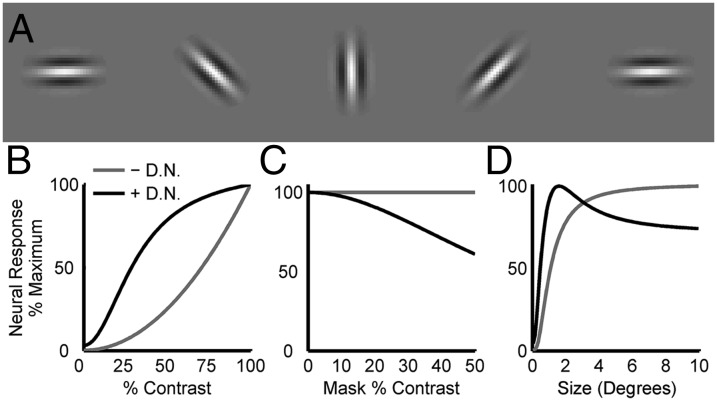Fig. 3.
Effects of divisive normalization on a model of primary visual cortex. (A) Receptive fields of five neurons with different retinotopic positions and orientations. (B) Contrast response function without (– D.N.) and with (+ D.N.) divisive normalization for a model neuron. The stimuli were gratings of the optimal position, orientation, and size for that neuron. Divisive normalization causes the response to saturate with increasing contrast. (C) Cross-orientation suppression in the same neuron. The plot shows responses to stimuli constructed by summing the preferred grating at 50% contrast and an orthogonal grating (“mask”) of different contrasts. Without divisive normalization, the response is unaffected by the mask. With divisive normalization, the mask has a suppressive effect that increases with mask contrast. (D) Size tuning for the same neuron. Without divisive normalization, the response increases monotonically with stimulus size and saturates. The saturation reflects that the neuron is activated equally well by any stimulus larger than its receptive field. With divisive normalization, the response first increases with stimulus size but then decreases, resulting in a preferred size. The decrease in activity reflects that larger stimuli activate more neurons, thereby increasing the suppressive effect of divisive normalization. (B–D) Response amplitudes are inherently smaller with than without divisive normalization. To highlight differences in the shapes of the response functions, each curve is plotted as a percentage of its maximum value.

